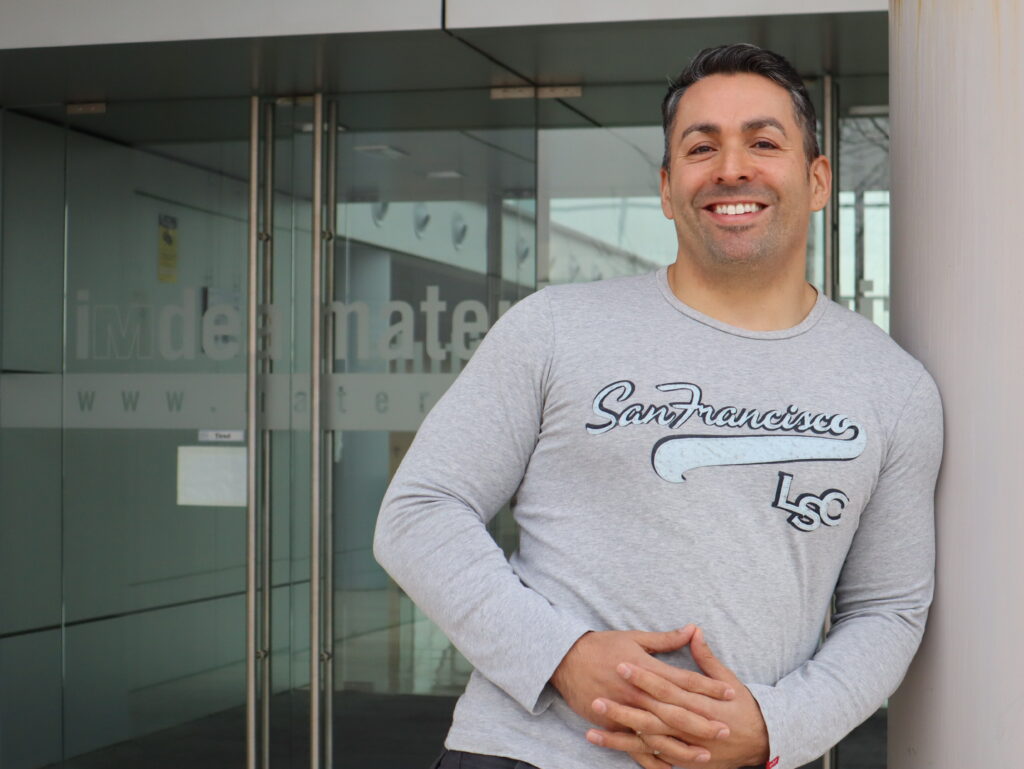- Dr. Johan Christensen was recently named as the leader of IMDEA Materials’ new Acoustic and Mechanical Metamaterials research group.
- Dr. Christensen believes the innovative potential of metamaterials can be applied in a range of applications, from improved optics, to mitigating noise pollution, to creating non-reflective surfaces for stealth vehicles.
From his earliest days as a predoctoral researcher, Dr. Johan Christensen has been driven by the desire to push scientific boundaries.
Dr. Christensen recently took up a position at IMDEA Materials Institute as a Senior Researcher and leader of the Institute’s newly-founded Acoustic and Mechanical Metamaterials research group.
Metamaterials are a relatively new class of materials with structures that exhibit properties that are either unknown, or rarely found in natural materials.
Many of these unusual properties offer great promise for scientists in a wide range of fields, including optics, aerospace, sensors, and communications, among others.
In his early years studying metamaterials back in 2015, Dr. Christensen was working as an Assistant Research Professor at the Technical University of Denmark (DTU).
And he recalls he and his colleagues finding inspiration in an unlikely source when it came to using metamaterials to question the established scientific order.
“Sometimes we would sit around together and look at textbooks that dealt with basic scientific concepts, those things that are supposedly etched in stone,” Dr. Christensen said. “And basically, we’d try to break those apart and challenge these fundamental concepts. What can we do to turn the world of physics upside down?”
“We used to look at superheroes and supervillains and the kind of abilities or superpowers they had, and we would try to work out how we could replicate those concepts using metamaterials.”
“We wanted to do insane physics with these new metamaterials that will give you responses you can’t get with traditional materials.”

One example highlighted by Dr. Christensen of the potential of metamaterials is in breaking the so-called diffraction limit. Typically, when light encounters a material, it undergoes positive refraction and bends at a specific angle according to Snell’s law. The same effect applies to sound waves.
Metamaterials, however, offer the possibility of inducing a negative refractive index, a phenomenon previously unseen in naturally occurring materials in which light or sound waves bend in the opposite direction.
“This concept of negative refraction has some fascinating implications,” explained Dr. Christensen. “For example, it’s been theorized that you could use these materials to create the perfect lens with optical properties far beyond what are currently available thanks to being able to break the diffraction limit.
“Experts in metamaterials today, however, are not only focusing on optics, but also in other areas of wave physics which are also very interesting. My group and I have been studying using the same principles in the field of acoustics.”
“This has a wide range of applications. For example, we could use these metamaterials to mitigate noise pollution around highways or in cities. Or even the ability to create surfaces that don’t reflect sound or radar waves at all, or which give different reflections from different directions. This could be incredibly important in creating stealthier vehicles for military applications.”
Along with his time at the DTU, Dr. Christensen has also worked as a postdoctoral researcher at the Spanish National Research Council (CSIC) and as a research fellow at the Carlos III University in Madrid.
Once established at IMDEA Materials, he hopes to advance his most recent work in using concepts of topology and symmetry in metamaterials, as a tool to create acoustic and mechanical properties by design.
In doing so, he hopes to continue pushing boundaries, just as he has for his entire scientific career.
“I have to mention my Ph.D. and my first postdoctoral supervisors,” Dr. Christensen added. “They instilled in me the importance of seeking out high-impact science, to sniff out what’s really relevant.
“You need to ask yourself, what you’re doing this work for in the first place? Is it just because you like equations? Is it just because you recently read an article about something interesting? But if it is, then what you’re thinking about can’t be that novel because someone else has already published it.”
“So, I always try to have that mentality of pushing the boundaries and trying to do things that no one else has even thought about doing before.”

